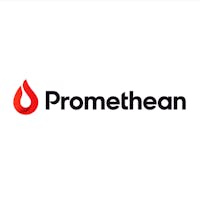Earlier this year, studies confirmed what many educators already knew: Students have suffered substantial academic setbacks resulting from the pandemic. Research from McKinsey revealed that, on average, K-12 students lost up to four months of mathematics and four months of reading progress in the last school year.
With newly distributed federal stimulus funds now in hand, school districts nationwide are poised to set learning recovery plans in motion. The American Rescue Plan requires local education agencies (LEAs) to spend at least 20 percent of federal funding on evidence-based initiatives to mitigate the issue. In response, districts are deploying a multi-pronged approach to learning recovery. Summer and after-school programming, tutoring, truancy intervention, teacher hiring and training, and improved data systems are all part of the solution.
Perhaps the most vital initiative among them is a focus on social-emotional learning (SEL). The mental health crisis among America’s youth predates the COVID-19 pandemic, with depression and anxiety on the rise well before the first lockdown. Yet, the pandemic has only complicated matters. A recent meta analysis revealed that depression and anxiety in adolescents has doubled since pre-pandemic times and that mental health challenges have continued to worsen over the duration of the pandemic. Now, one in five youths experience anxiety, while one in four suffer from depression.
Research has shown a direct link between students’ mental health and their academic performance, placing SEL at the forefront of the learning recovery effort. A student’s emotional well-being plays a critical role in their academic engagement, motivation and relationships. SEL interventions have been proven to bolster students’ emotional intelligence while reducing symptoms of depression and anxiety. Studies also show that SEL programs help students more effectively manage stress and depression, support self-esteem and encourage positive attitudes about school—ultimately improving academic outcomes.
These benefits are widely recognized by educators; Promethean’s 2021/22 State of Technology in Education report found that SEL is the top priority for schools across the country. Consensus around the importance of SEL is further evidenced in states’ federal funding plans where SEL initiatives feature prominently. It’s clear that SEL is central to student success; however, our report also revealed that schools face several formidable challenges on their path to supporting student mental health.
The first set of challenges revolves around school budgets. While educators deemed SEL a top priority, the report found that only one percent of schools included SEL in their budgets. With funds dedicated to SEL interventions, federal aid will help to correct this discord. But the report sheds light on a deeper, long-standing issue: a fundamental misalignment between school objectives and the budgets allocated to them. Federal aid will allow schools to fund essential SEL programs for the time being, but until SEL objectives are more accurately reflected in school budgets over the long term, stimulus funding will remain a band-aid solution.
Our report also found areas of opportunity in districts’ investments in education technology. Edtech plays an increasingly important role in the classroom. And with 83 percent of educators agreeing that technology is a highly effective way to engage students, its potential to facilitate SEL makes it a core part of the learning recovery solution. In addition to driving collaboration and productive social interactions, innovative edtech can enable personalized learning based on a student’s individual SEL needs to support differentiated learning recovery. Edtech can also free up teacher time to focus less on administrative tasks and more on building relationships with students.
Schools generally agree that learning technology is a high priority—as reflected in their budgets. But some doubt whether funds are being spent on the most impactful edtech. The report found that over a third of educators believe that schools invest in suboptimal tech solutions. To meet their learning recovery goals, schools must prioritize the adoption of technology designed for maximum SEL impact.
The State of Technology in Education report also underscored challenges associated with teacher training. The success of SEL programs is contingent on educators’ ability to implement them; adequate teacher support is essential. The report revealed that only a small fraction (16 percent) of staff receive full training. When asked about the lack of teacher support, many respondents (40.4 percent) cited budgetary issues as the root cause. Half of the educators surveyed say that either in-class tech training or modern learning techniques, like SEL, are the highest training priorities. But some respondents noted that “any professional development for technology is the barest it can be to save time and money.”
Download Promethean’s full report, The State of Technology in Education 2021/2, and talk to the experts.
Overcoming these barriers is crucial for our schools—enabling them to both address pandemic-related learning loss and overcome deep-seated educational inequities. Students from marginalized communities are more likely to experience emotional distress associated with poverty, racism and discrimination. These students stand to benefit from SEL interventions aimed at providing them with the targeted support they need.
SEL can help schools foster a culture of understanding and acceptance. It can also be used as a framework for understanding bias and affirming the full spectrum of student cultures and identities. With ongoing evaluation and improvement, SEL programs can propel schools toward more equitable outcomes. Prioritizing SEL means aligning budgets to invest in necessary resources, from SEL-focused technology to teacher training. With a strong SEL program in place, schools can address learning loss while reframing the achievement gap through a new, more nuanced lens for an equitable future.



